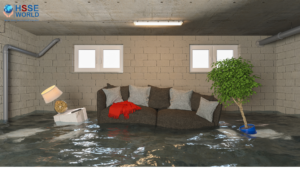Common Scenarios to Be Prepared For Emergency Response Situations
4 min read
Plan for the Unplanned
A workplace emergency is any unexpected occurrence that creates an unsafe space, prevents you from operating your normal business processes, or causes damage to anyone or anything on your property.
Emergency situations don’t have to be massive hurricanes or raging wildfires threatening entire cities . Some of the most common emergencies occur in one room of a building or in a corner of a work site. These can be addressed by your team if they are properly trained and the right protective gear.
Starts with a Spark
Fires don’t have to be raging on a large scale to cause problems on a worksite. Consider a grease fire in a restaurant or an electrical fire in a warehouse. They’re small, but can still cause a lot of harm.
Under the right circumstances, smaller fires can be handled with a portable fire extinguisher. It’s important to make sure that your extinguishers are regularly maintained, accessible, and located in appropriate locations around your work site or building.
Slippery Spills and Air Quality Alerts
Most job sites use liquids of some kind, often in very large quantities. Whether it’s the cleaning supplies found in most workplaces or the harsher chemicals used in manufacturing and industrial application, their presence means that hazardous material spills and leaks could occur at any time.
Your emergency response plan should include access to protective gear suitable to handle the substances found on your site, along with proper disposal receptacles. For most worksites, gloves and perhaps disposable respirators will be enough. But if you’re working with higher levels of toxicity, you may need to keep eye protection, biohazard suits, and more effective respiratory protection on hand.
If a spill takes place, you might have to worry about more than slip hazards and clean-up procedures. A spilled chemical might also give off harmful vapors. It’s important to also consider the possibility that more than one chemical could spill at one time and mix together in the process. The reaction of multiple chemicals coming into contact could release airborne toxins that can harm internal organs inhaled. If this is a possibility, be sure to have enough protective suits and SCBAs on site.
Bumps, Bruises, Breaks, and More
You’ve got a team working near a busy roadway when you witness that worst case scenario you hoped would never happen. A car careens onto the work zone, knocks over two workers, and pins a third against a fence. The driver is unresponsive and all three workers are clearly injured.
How does your team react? Do you have a first aid kit on site? Is the kit complete? Do your employees know who to call for aid and whose job it is to make the call?
If something like this happens, being prepared makes all the difference. You don’t want your on-site team wasting precious minutes trying to figure out what to do or who should do what. And you certainly don’t want them to be missing the equipment they need, or have to drive back to the office to get it.
All work sites should have at least a basic first aid kit, complete with:
- Gauze pads
- Adhesive bandages
- Cleaning agent
- Scissors
- Blankets
- Tweezers
- Tape
- Gloves
- Resuscitation devices
- Elastic wraps
- Splint
These basic supplies can be used to treat shock, lacerations, fractures, and most other injuries until trained medical personnel arrives.
There should also be an automated external defibrillator (AED) near at hand in case a worker suffers a cardiac arrest. These machines are easy to use by anyone who is provided with written, pictorial, and verbal instructions
Like fire extinguishers, first aid kids and AEDs should be maintained regularly to ensure that everything is functional. Your emergency response team should be trained on how to respond to an incident, as well as how to use the PPE at their disposal. Regular walkthroughs and practice scenarios can be helpful in preparing your team for a real emergency.
Big Trouble in Small Spaces
Some work sites have confined spaces that can create unique emergency situations.
OSHA recognizes confined spaces as locations that are difficult to enter and exit or are just large enough for a worker to perform specific tasks, like a tunnel or duct work.
Confined space emergency response plans should involve proper personal protective equipment (PPE) that is readily accessible in case of an incident, understand their role in rescuing, and be proper trained in first aid and CPR. Given the nature of the confined space, being prepared for a rescue operation is critical. If a worker were rendered unconscious or somehow trapped in a confined space, helping them poses additional challenges (for related reading, see Confined Spaces in Construction).
Be Prepared
You don’t have to be a Boy Scout to observe the motto “be prepared.” For the best chance of minimizing the harm done in emergency situations, it’s important to have a solid response plan in place. You can’t prevent every accident, but with some preparation, you can improve their outcomes.



